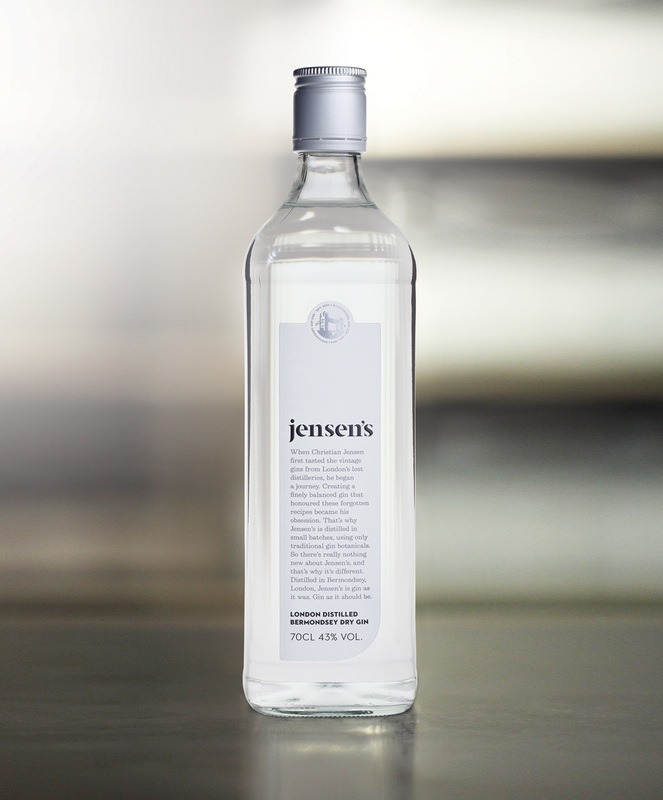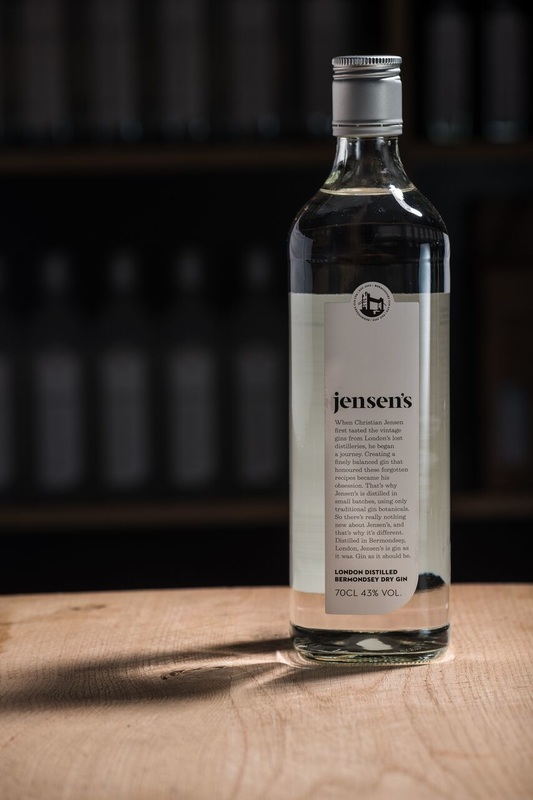jensen's gin | christian jensen
Words by Fiona Symington-Mitchell. Photos courtesy of Jensen's Gin
|
ANY story that begins with the line - “one night in a small bar in the middle of Tokyo” is destined to be good, and the story of Jensen’s Gin with its cinematic opening of a stranger, a bar in a foreign city and a bottle of gin is no exception.
To elaborate. It’s the millennium and Jensen’s Gin founder, Christian Jensen finds himself in a bar, lamenting the loss of old-style gin - the stuff of cocktail legend. Much to his surprise, the bartender agrees, before placing on the bar in front of him a bottle of Gordon’s Gin. For gin-lover Jensen, what followed was a revelation. “He pulled out a bottle from the 1960s, and he let me try this next to a bottle from 2000. It was clearly a different type of gin - a different product,” he recalls. So profound was the experience that Jensen became a regular, sampling the vintage gins collected by Oda-San on his frequent trips to mountain villages across Japan and what he brought at auction. “He not only had Gordon’s but all types of old gin. He was a real connoisseur, a top-end bartender, and very well respected.” Such was Jensen’s appreciation that when he left Tokyo, Oda-San gifted him a bottle, saying in jest, "take this to London and make some nice gin. I can't find it anymore.” Back in Bermondsey, Jensen tracked down Charles Maxwell, a master distiller at Thames Distiller with the aim of recreating a true London gin. As Jensen tells it, much like the fate of London’s breweries, in the 1950s and 1960s, smaller gin distilleries had been brought by giant drink companies, creating a market of very little choice. His aim was to create “gin as it should be”. Working with Maxwell, they discovered that the gifted gin from Oda-San had been made in Bermondsey in the same neighbourhood where Jensen lived. With no recipe and the original distiller having passed away, they set about creating a London Dry Gin resembling Jensen’s Toyko experience. What followed was a process of trial and error with different batches being compared to the original bottle from Japan. As Jensen explains, “ It was a very hard process but I wanted something that was clearly a gin, that was going to be smooth, to be good for a martini.” The result was a classic cocktail gin at 43% ABV with Jensen calling it Bermondsey Dry Gin. Such was its success that he then turned to recreating another lost style of gin - Old Tom, using a recipe discovered in an old distiller’s handbook. Importantly, the recipe did not include the sugar typically added in the late 1800s to 1900s (to mask impurities) but was 50 years younger (1840s), when Old Tom was more botanical. For Jensen, this gin was all about discovering “how Old Tom was made and getting it made properly”. Of which the result is a gin heavy on botanicals and perfect for classic cocktails like a Tom Collins. Today, Jensen’s Gin is made from under a railway arch in Bermondsey using a Still commissioned by John Dore & Co. With his team of Dr Anne Brock as distiller and Hannah Lanfear as brand ambassador, they now include seasonal gins like sloe berry in addition to the original Bermondsey Dry and Old Tom. So what makes a good martini? It’s all about the balance of alcohol, temperature and dilution according to Jensen. “You need to either stir it or shake it but you also need some water in the gin as a part of the process. You need some vermouth flavours as well - how much or how little is a question of your taste.” As for Odan-San, has he tasted what Jensen created? He has and is a big fan. Jensen’s Gin is open to the public on a Saturday and Sunday at 55 Stanworth Street, London. You can find it at venues such as Balthazar, The Savoy, Selfridges, Fortnum & Mason, The Connaught Hotel, Fera at Claridge’s and The Mandarin Oriental among others. Jensen's can also be purchased online. the best place to get a martini in london Dukes Bar in Mayfair is one of the most fantastic martini bars in the world. They have a relatively small selection of gins available but it is absolutely fantastic. They only allow you to drink two. how does london need to evolve as a food city London is growing everywhere but it is finding places like Dalston where exciting things are happening before it becomes overly commercial. In Japan, where I lived there were a lot of small businesses - shops, restaurants and bars throughout the city. I don't know how they did it but I think that London needs to find a similar way to maintain that level of independence. new to london Borough Market is always an interesting place. There are also a lot of good food markets such as Spa Terminus down the road from here. This is where I go every Saturday when I am in London because I get the quality. I get to support other business and you meet people who care about their products and what they do. for your address book Balthazar, 4-6 Russell St, London WC2B 5HZ Dukes Bar at Dukes Hotel, 35 St James's Pl, London SW1A 1NY Fera at Claridge’s, Claridge’s, 49 Brook St, London W1K 4HR Fortnum & Mason, 181 Piccadilly, London W1A 1ER Borough Market, 8 Southwark St, London SE1 1TL Selfridges & Co, 400 Oxford Street, London W1A 1AB Spa Terminus, Dockley Road Industrial Estate, Dockley Rd, London SE16 3SF The Connaught Hotel, Carlos Pl, London W1K 2AL The Mandarin Oriental, 66 Knightsbridge, London SW1X 7LA The Savoy, Strand, London WC2R 0EU August 2016 Fiona Symington-Mitchell is an Australian freelance writer living in London. She has published with Modern Farmer, Remedy Quarterly, Countlan magazine, Food& and de Groot Media Australia across its food guide publications. |


